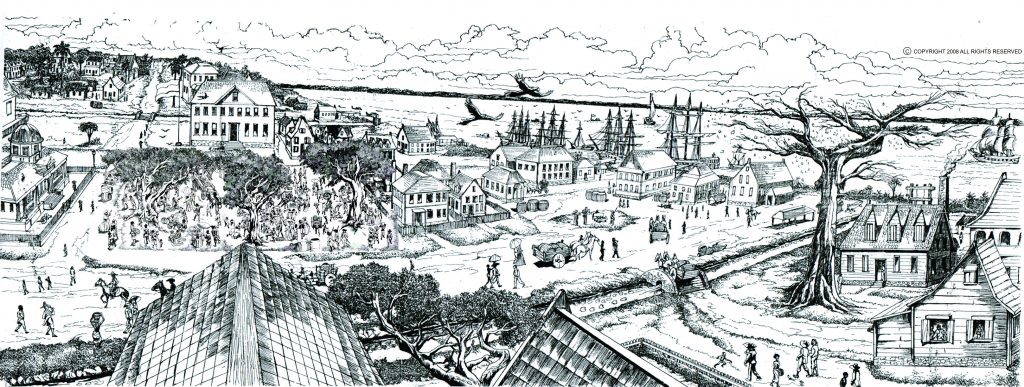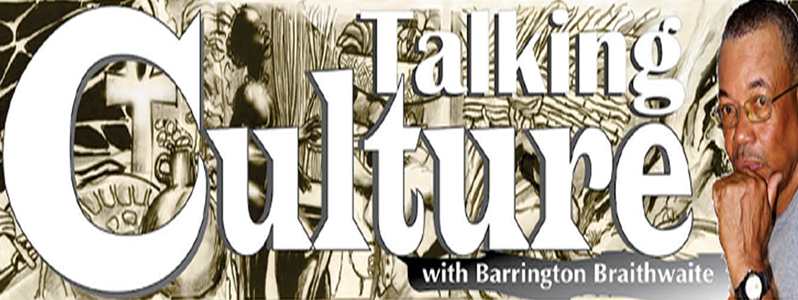THE township that became the port town, then the city of Georgetown, then capital of the united counties that are now the nation of Guyana, is the consequence of no objective plan but rather a process of events that began with the initial settling of the Dutch and African slaves in 1623 and their establishment of the small defence outpost at Kijk –Over-Al, to protect the plantations Duinberg, Fortuin and Poelwyck at Bartica. Then came the arrival of the Caribs who then resided in the Orinoco and were in constant clashes with the Spaniards who then moved into Dutch territory and requested to settle on the Mahaicony River. They, like the Dutch, were sworn enemies of the Spanish. They supplied the Dutch with slaves taken from other Amerindian tribes, to expand the plantations on Bartica. But the serenity was broken in 1708 with the arrival of French pirates who lay siege to the fort and extracted a ransom from the Dutchmen, they eventually abandoned Kijk-Over-Al and soon enough Bartica, to the African and Amerindian slaves who had run away finding no reason to die protecting ‘Massa’s’ property. The Dutch then established their official capital in 1753, on the island of Borsselen, off the area of what is currently known as Soesdyke.
But in 1738, Governor Gravesande had opened the colonies to farmers from all friendly European nations, noting that Demerara was the most fertile of the three colonies and the Demerara River was the deeper of the rivers. This required the expansion of the slave population whose task it would be to extract the coastal lands from the sea, dig the canals, build the wharves and make possible the semblance of Port Town Stabroek. The Africans secured the plantation lands through brutal, savage toil and an understanding of tropical drainage. The creation of the Demerara coast began through savage means, on the backs of African slaves.To guide ships into the Demerara River, the Dutch built a Brandwagt or observation post possibly where the Georgetown Magistrate Court is (the river washed well past the Stabroek Market).
In 1748, the ward of Stabroek was established to accommodate both slave ships and cargo shipping; this small ward was bordered by two canals dug by slave labour, the Hadfield canal and the Croel street canal. In 1781, the English came and the colony was surrendered to them. They built a fort named Fort St George. The following year, the French came and they demolished the English Fort and their commander decided that Stabroek would be the capital. From him we inherited the famous declaration of Stabroek: “Religion would have its temple, Justice a palace, war its arsenals, commerce its counting house, and industry its factories.” The Dutch abandoned Borsselen Island and Stabroek become the official capital administrative centre of Demerara.

By the 1780s many Africans had escaped from the plantations and established Maroon settlements. The Maroons even defeated an English/Dutch expedition in 1795 in the Boerasirie Creek. The Dutch and English established a contingent of African and Amerindian troops. The Africans would become freemen for this service. They intercepted the Maroons with the scouting diligence of the Caribs, to quote Pinckard, “Most of the ringleaders were taken and brought to Stabroek, where they were afterwards tried and executed, the majority of them suffering from a degree of fortitude and heroism worthy of a better cause. One in particular named Amsterdam supported the extreme of punishment with firmness truly astonishing. He despised the severest suffering and nothing could induce him to betray his late companions, or to make known their yet undiscovered retreat.”
Some of our historians have told us that by the 1800s the Maroons were wiped out, but they were there in 1823 when a rendezvous with them was mentioned in Crowns of Glory, Tears of Blood- 1823 insurrection. The Maroons seemed to have changed their tactics by the early 1800s and even mingled with the slave population at the Sunday morning market selling their produce, earning money. The first census of old Stabroek rests with Henry Bolingbroke 1799-1806. He accounts for 1,500 Europeans, 2,000 free people of colour, 5,000 Africans – not all were slaves. He accounted for colony Africans who were miserable prisoners. He alluded to freemen who have purchased their emancipation- these were butchers, fishermen and artisans. He also describes African clerks, no doubt slaves but learned in the functions of the waterfront for the bloodline of Georgetown was the Plantations that enveloped the Town like plantation Bourda etc. and its breath of life the waterfront.
Brickdam is our first road that, like its name suggests, was paved by bricks. Werk- en-Rust was described as a separate village or town. Kingston is also an old village, linked to Fort William Frederick (where Transport and Harbours in now located). There were other wards at the time, like Longchamp and Newtown. In the History of the performing arts of Guyana, we must include the travelling American actors who are described with their cargo of “Canvas palaces and painted forests; of crowns and daggers, sceptres and chains; of the purple attire of majesty, and the motley foppery of folly.” It was incredible that though illiterate, there were Afro Guyanese who would impersonate the few Moorish characters, Othello, Juba, and Oroonoko with propriety -Bolingbroke. These were the first groups recorded that launched the performing arts to old Stabroek.
On May 5, 1812, it was ordered that the town formerly called Stabroek be called Georgetown. The colony was firmly then an English colony. With my ACDA colleagues Elton McCray and Sister Marshall and the support of then-Mayor Hamilton Green in 2012, I advocated the concept ‘Kreole Day’ that consisted of a showcase of small business craft and culinary items to celebrate on the parade ground the 200th Anniversary of Georgetown, since the Government of the day ignored that significant milestone, it went well considering the limitations we faced.




.png)









